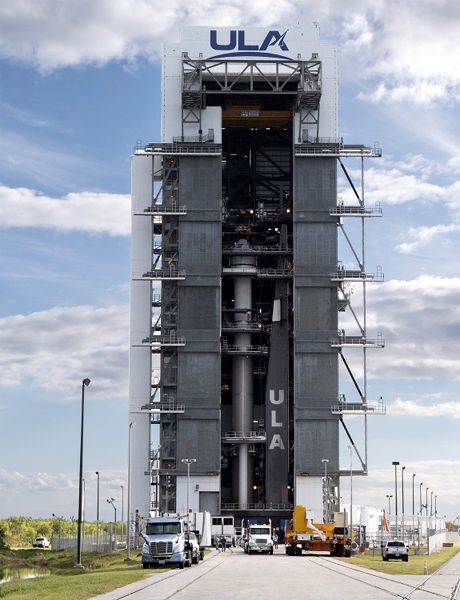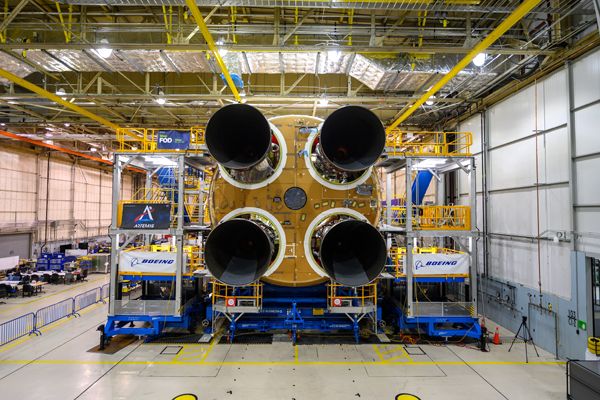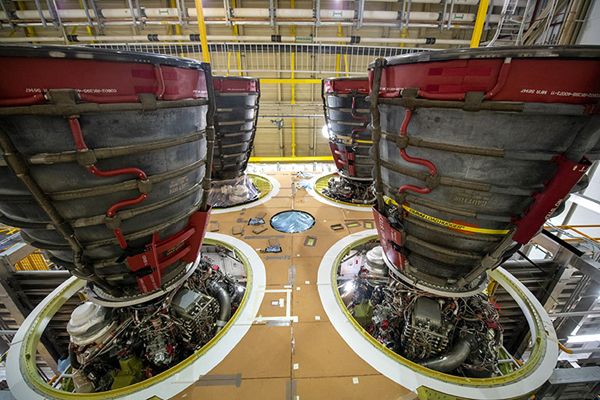
Boeing and United Launch Alliance
Boeing Starliner Placed Atop United Launch Alliance Rocket for First Flight (Press Release)
Spacecraft being prepared for uncrewed flight test to International Space Station
CAPE CANAVERAL, Fla., Nov. 21, 2019 — Boeing’s new CST-100 Starliner is now connected to the United Launch Alliance (ULA) Atlas V rocket that will launch the spacecraft on its first flight test to the International Space Station. Liftoff from Space Launch Complex-41 at Cape Canaveral Air Force Station is targeted for Dec. 17.
Starliner was mated to the rocket’s upper stage in ULA’s Vertical Integration Facility after being transported this morning from Boeing’s assembly building at NASA’s Kennedy Space Center. On Dec. 15, two days before launch, Starliner and its Atlas V will move a final half-mile to its launch pad.
“Our team successfully completed the transport and mating of two incredible vehicles,” said Boeing Starliner Vice President John Mulholland. “Safety and mission success come down to ensuring the integrity of every step along the way. I could not be more proud of the Starliner team and the dedication put forward to get here today.”
Combined, Starliner and the Atlas V stand 172 feet (52 meters) tall. The rocket generates about 1.6 million pounds of thrust at launch. The Atlas V, built in Alabama, has completed 80 successful launches since 2002.
The first Starliner flight to the International Space Station, which Boeing also built and sustains for NASA, will carry only cargo for its few-day docked stay. The second flight test, using a different spacecraft, will take Boeing astronaut Chris Ferguson, along with NASA astronauts Mike Fincke and Nicole Mann, to the station for a longer mission.
The reusable Starliner capsule is being developed in collaboration with NASA’s Commercial Crew Program, which will return America’s ability to launch people to low Earth orbit from American soil for the first time since Ferguson commanded the final space shuttle mission in 2011.
Source: Boeing


